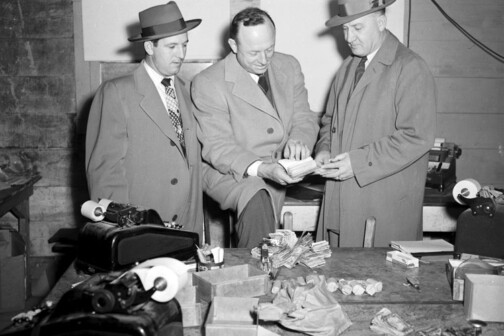No matter your stance on abortion, you likely don’t know this about Roe v. Wade: in the spring of 1969, Jane Roe, aka Norma McCorvey, was a 21-year-old lesbian who worked at the White Carriage, a gay bar in Dallas. That’s where she met a married World War II vet, twice her age, with whom she played pool and collected bets, despite the fact that he was short one finger. They’d get drunk and stoned together and occasionally have unprotected sex. By September, McCorvey found herself pregnant for the third time.
Her mother was already caring for her first daughter; Dallas attorney Henry McCluskey had helped her get the second adopted by a kind anesthesiologist and his wife in Richardson. The third child, by a third man, was also unwanted by McCorvey. This time she decided an abortion was her best option, so she again sought the counsel of McCluskey to see if there was any way she could obtain one. He advised her it was still against the law. But he had an idea.
McCluskey, a 24-year-old gay man who practiced in a state where his consensual sexual activity could land him in jail for up to 15 years, had recently filed a suit to overturn Texas’ sodomy law with the help of Linda Coffee, another young gay attorney in town. Coffee had been looking for an opportunity to challenge a different portion of the Texas Penal Code—the one that criminalized abortion—but she didn’t have a plaintiff. When McCluskey told Coffee he had a pregnant client who wanted an abortion, all that changed.
The rest of the landmark case’s history, which is revealed in Joshua Prager’s exhaustively researched new book, The Family Roe: An American Story, is equally dramatic. Prager, a long-standing journalist who has written for the Wall Street Journal, the New York Times, and Vanity Fair, first became curious when, in 2010, he read an article that noted that Roe v. Wade was decided too late for McCorvey to have an abortion. Prager wondered, What happened to the baby?
His journey started in Dallas with Connie Gonzales, McCorvey’s long-term significant other. Gonzales told Prager that many of the stories McCorvey had told the press over the years (about being raped, about a daughter being kidnapped, about becoming antiabortion) simply weren’t true. What was true: she was a woman whose pseudonym had eclipsed her complex life. The groundbreaking attorneys who represented her would face tragic loss. Her three daughters would eventually meet and try to find a way forward. And the nation-dividing case she set in motion would continue to ignite even after her death.
It’s a stunning read. The excerpt from our January issue is online today.
Author







